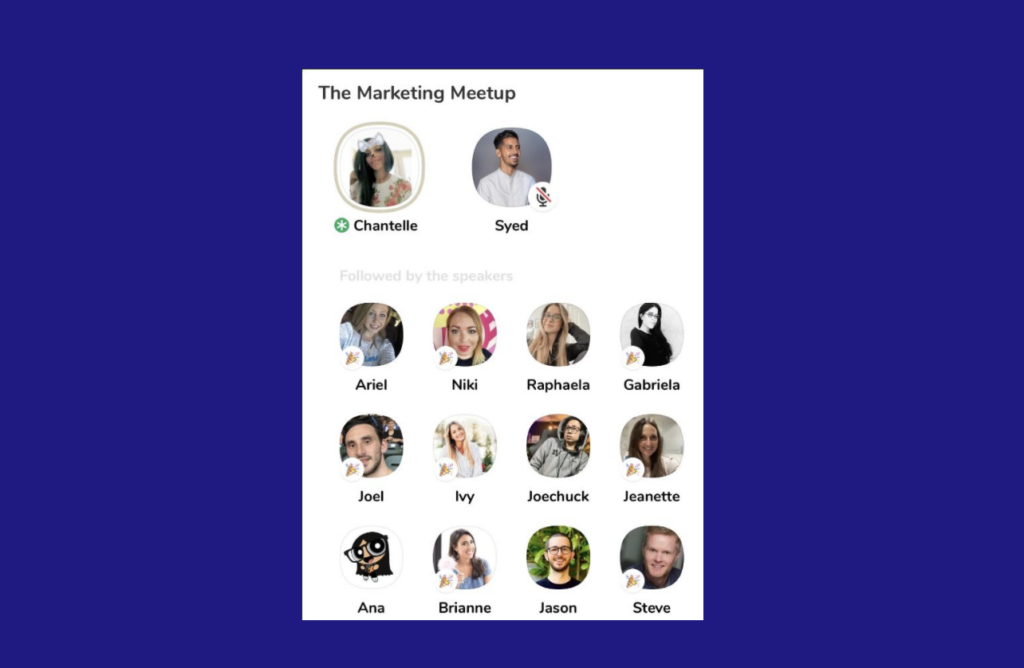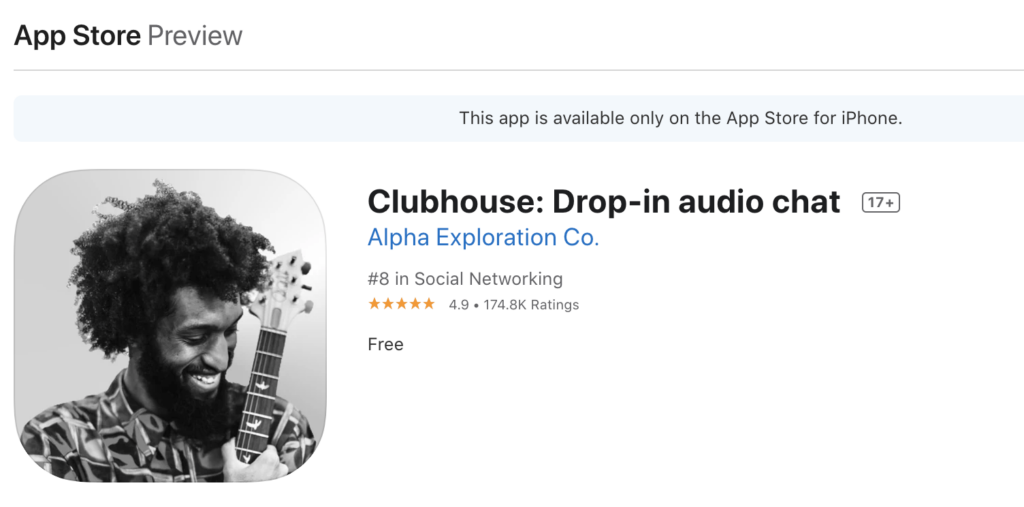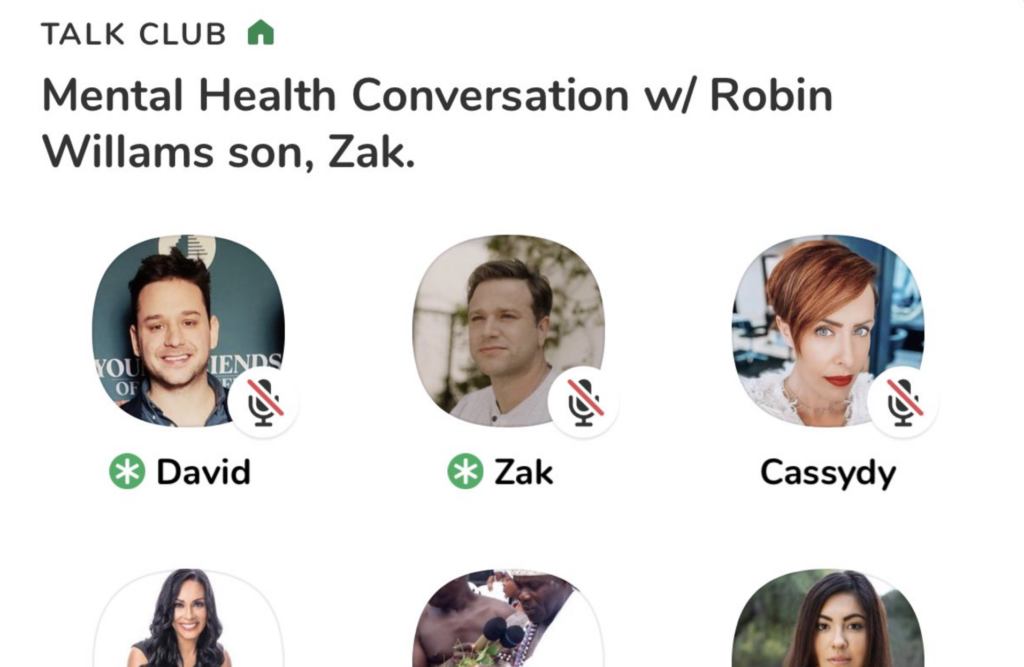
What is the Clubhouse Social Media App, and Why is it Trending?

Sometime last year I caught wind of a new social app that everyone was buzzing about on Twitter. It was invite only, so only an exclusive group had gained access. Ever since I’ve only continued to hear the question “What is Clubhouse?” more regularly, even as more of us join.
Clubhouse is hot right now.
It’s probably the hottest social media app as far as what’s getting tongues wagging.
If you somehow haven’t’ heard of it yet (do you even social media, bro?), you probably will. Soon.
Because people are placing big bets on the app and using it to build and grow their personal brands.
So What is Clubhouse?

Clubhouse is an audio-only social platform available for download as an app on iPhone or iPad.
Co-founders Paul Davison and Rohan Seth created the Clubhouse app and launched it in early 2020. Paul is a Stanford grad who previously worked at companies like Pinterest and Google. Rohan is also a Stanford grad and alum of Google and Opendoor.
In May 2020, the number of members sat at 1,500. That skyrocketed to 600k by December.
VCs also regard Clubhouse with significant interest. An investment by Andreessen Horowitz valued the app company at $100M in May 2020.
Moving forward the app looks to continue growth in part by ramping up the amount of content and activity among users, with a “Creator Pilot Program” started at the end of 2020 to support, encourage and fund select creators.
How Do You Use Clubhouse?
First you need an invite from a current member.
Each Clubhouse member has a limited number of invites they can send to others. Although these invites can be sent to anyone in the world, only people with a mobile iOS device can currently access the app. There’s talk that Android device users will also be able to join eventually.
Once you join the app, you’re able to search and follow a variety of people who use the app. This includes a number of celebrities and prominent business people, including Oprah, Kevin Hart, Gayle King, Ashton Kutcher, Alexis Ohanian Sr, Gary Vaynerchuk, and Jared Leto.
[Read another post: The Hottest Social Media Trends in 2021]
You can also join a number of “rooms” hosted by different users.
Rooms are hosted by users, and they’re the only ones allowed to speak until they grant permission to other members of the audience to join them on “stage.”
It’s this open forum format that creates so much of the excitement about the user experience on the app and sets it apart.

A regular person like me could be pulled up on stage and speaking alongside my favorite TV personality or successful investor.
All the discussions happen live, and it’s against the terms of service to record or save any of them.
Which further heightens the sense of exclusivity among the app’s users. All content is the very definition of a “you-had-to-be-there” moment.
How Can You Get an Invite to Join?
The Clubhouse app is currently in beta, and you’re only able to join if another current member uses one of their limited invites to bring you on board.
While you’re waiting on an invitation, you can reserve your username in the meantime, though.
What are the Benefits of Using the Clubhouse App?
Right now the primary benefit rests on the exclusivity.
The fact that not everyone can get in means rooms are smaller and more intimate, giving you more potential to be seen and heard.
It also means users can feel more elite and are more driven to use the app. It’s currently a status symbol, with people even entering social media giveaways to win an invite.
The variety of content also presents a big draw.
Unlike some other apps, like Instagram or TikTok, where younger users or attractive faces tend to dominate, the audio-only format means anyone who has smart insights or the gift of gab can succeed.
It’s all about who can create the most interesting, compelling conversations.
For example, in January 2021 a number of U.S. city mayors joined a room to discuss the impact of the pandemic and what the future could look like as people migrate around the country. It was a live conversation, available only on Clubhouse for that one night.
Throughout 2020 there were also other rooms hosted by social activists, political commentators, celebrities, and more.
What’s the Outlook for Marketing on Clubhouse?
This is where I get pretty excited.
Clubhouse currently doesn’t seem to have any real brand presence. Because it’s still in beta mode, there aren’t really any noticeable ads. No sponsored content. It’s all just people talking to people.
That doesn’t mean there isn’t a promotional aspect or opportunity for that.
Lots of Clubhouse users have figured out how to leverage the app to showcase the best of themselves. From the optimization of their profile to speaking up in different rooms to get visibility with large audiences, a class of Clubhouse ‘influencers” is emerging. And you can point people to your other social profiles (primarily Twitter and Instagram right now), which means growth often extends outward.
Many people are saying that Clubhouse could eventually even replace podcasts or webinars.
In my opinion, that’s unlikely. It doesn’t have to be an either-or situation.
There are going to be people who still prefer podcasts or webinars rather than live audio. For one thing, podcasts offer the benefit of being able to record and continue to distribute content beyond the moment.
But on the other hand, Clubhouse requires a lot less lift to share audio content than podcasts do. And presents an opportunity for discoverability that many podcast-hosting platforms don’t.
Any Other Clubhouse Hacks or Tips?
In general my advice would be to try it out. Once you can secure an invite, take advantage of the opportunity to explore the app while it’s still evolving.
And it’s a great place to grow a personal brand or listen to content in a new format than most of us are used to.
You should take time to optimize your profile in order to best promote yourself or anything you’re looking to market. Linking out to your other social profiles helps grow your digital presence elsewhere as well.
Brand marketers should also be keeping an eye on the app for future opportunities.
Right now, there have been controversies that might limit its desirability in the future. In these cases, hate speech, misogyny and harassment went unchecked, highlighting a need for the platform to figure out effective ways to moderate in the future so everyone enjoys a safe, healthy experience.
Other audio-only platforms have also appeared in direct competition.
Those include:
- Space (for creators and owners)
- Quilt (positioned as a “feminine” space for feel-good conversation)
- Airtime (for live audio and video content)
- Chalk (voice communities)
- Realtime (impromptu, real-time voice conversations)
- and Twitter Spaces (yes, backed by Twitter, this is framed as “a small experiment focused on the intimacy of the human voice”).
But in the long run, if growth and interest continue on the same trajectory, Clubhouse could be a great place in the future for brands to connect with audiences directly and share audio content in an innovative way.
Read another post: 7 Creative Marketing Tactics to Test Out
Interested in participating in a Clubhouse specifically for conversations about brand, marketing and social media? Get updates and invites here! Or you can also sign up for my newsletter and get fresh insight delivered to you weekly.


